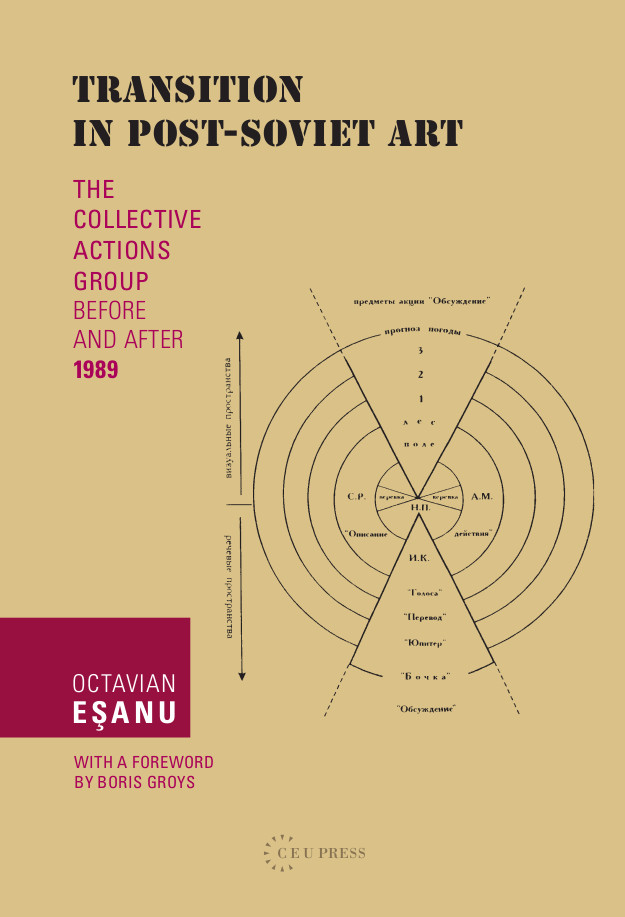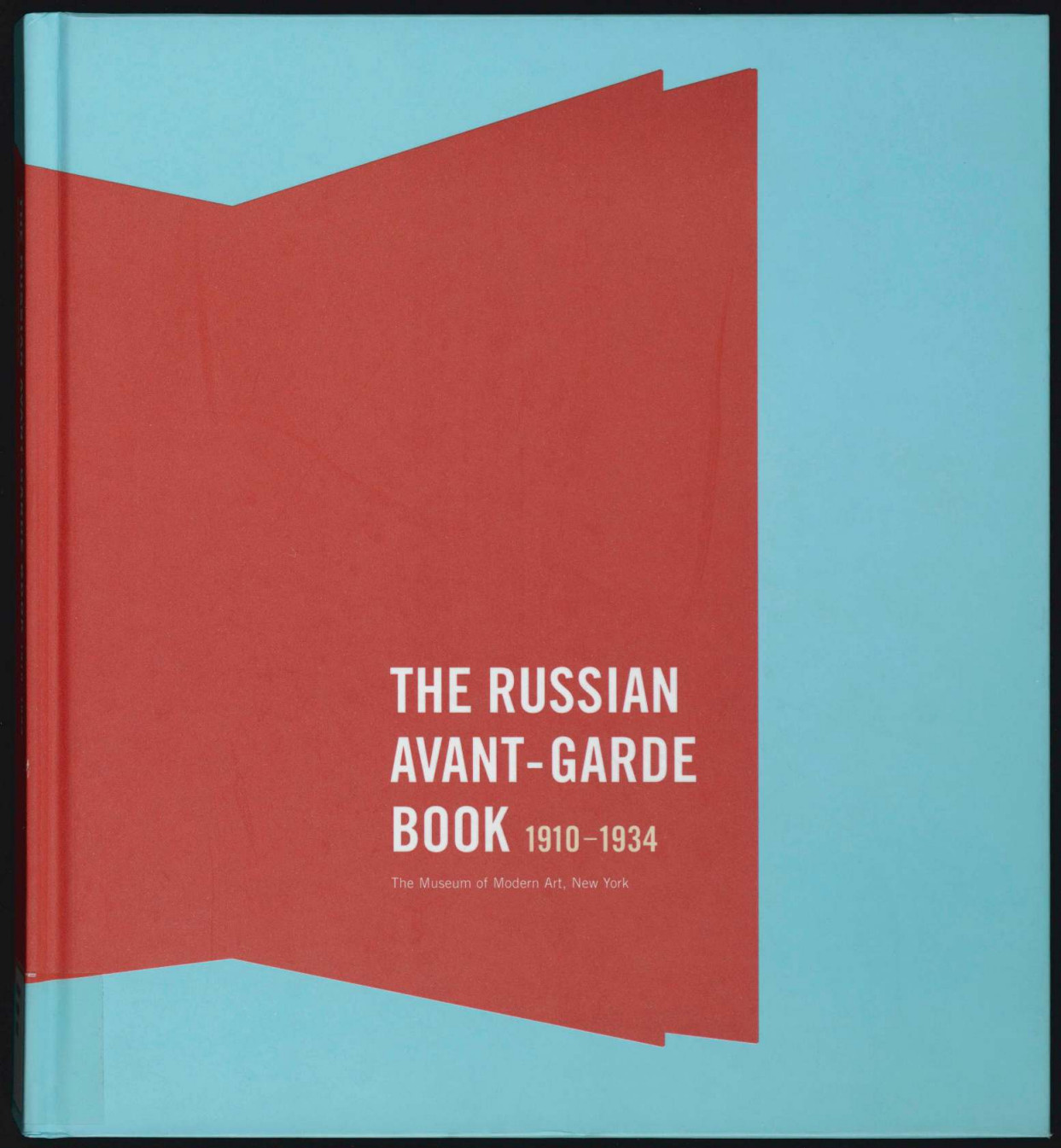Octavian Eşanu: Transition in Post-Soviet Art: The Collective Actions Group Before and After 1989 (2013)
Filed under book | Tags: · art history, conceptual art, performance art, post-communism, russia, socialism, soviet union, transition

“The artistic tradition that emerged as a form of cultural resistance in the 1970s changed during the transition from socialism to capitalism. This volume presents the evolution of the Moscow-based conceptual artist group called Collective Actions, proposing it as a case-study for understanding the transformations that took place in Eastern European art after the fall of the Berlin Wall. Eşanu introduces Moscow Conceptualism by performing a close examination of the Collective Actions group’s ten-volume publication Journeys Outside the City and of the Dictionary of Moscow Conceptualism. He analyzes above all the evolution of Collective Actions through ten consecutive phases, discussing changes that occur in each new volume of the Journeys. Compares the part of the Journeys produced in the Soviet period with those volumes assembled after the dissolution of the USSR. The concept of “transition” and the activities of Soros Centers for Contemporary Art are also analyzed.”
Publisher Central European University Press, Budapest, 2013
ISBN 9786155225116
xvii+357 pages
Review: Amy Bryzgel (Slavic Review, 2013).
PDF (7 MB)
Comment (0)Margit Rowell, Deborah Wye: The Russian Avant-Garde Book, 1910-1934 (2002–) [English, Spanish]
Filed under catalogue | Tags: · artists book, avant-garde, book, design, futurism, graphic design, photography, photomontage, propaganda, russia, soviet union

“Russian avant-garde books made between 1900s-30s reflect a vivid and tumultuous period in that nation’s history that had ramifications for art, society, and politics. The early books, with their variously sized pages of coarse paper, illustrations entwined with printed, hand-written, and stamped texts, and provocative covers, were intended to shock academic conventions and bourgeois sensibilities. After the 1917 Revolution, books appeared with optimistic designs and photomontage meant to reach the masses and symbolize a rational, machine-led future. Later books showcased modern Soviet architecture and industry in the service of the government’s agenda.
Major artists adopted the book format during these two decades. They include Natalia Goncharova, El Lissitzky, Kazimir Malevich, Aleksandr Rodchenko, Olga Rozanova, the Stenberg brothers, Varvara Stepanova, and others. These artists often collaborated with poets, who created their own transrational language to accompany the imaginative illustrations. Three major artistic movements, Futurism, Suprematism, and Constructivism, that developed during this period in painting and sculpture also found their echo in the book format.
This publication accompanied an exhibition of Russian avant-garde books at The Museum of Modern Art, New York. Featuring some 300 books, this was the most comprehensive exhibition ever devoted exclusively to the illustrated books made during this period. It was prompted by a gift to MoMA of more than 1,000 Russian avant-garde illustrated books from The Judith Rothschild Foundation, New York.”
With essays by Deborah Wye, Nina Gurianova, Jared Ash, Gerald Janecek, and Margit Rowell.
Publisher Museum of Modern Art, New York, 2002
ISBN 0870700073, 9780870700071
304 pages
via MoMA
Reviews: Holland Cotter (NY Times, 2002), Steven Heller (Eye, 2002).
Exh. review: Kristin M. Jones (Frieze, 2002).
Exhibition website
Publisher (incl. installation views)
WorldCat
English: PDF, PDF (2002, 72 MB)
Spanish: PDF, PDF (2003, 74 MB)
Victor Tupitsyn: The Museological Unconscious: Communal (Post)Modernism in Russia (2009)
Filed under book | Tags: · art history, community, community art, conceptual art, contemporary art, factography, identity, photography, postmodernism, russia, socialist realism, sots art, soviet union, utopia

“In The Museological Unconscious, Victor Tupitsyn views the history of Russian contemporary art through a distinctly Russian lens, a “communal optic” that registers the influence of such characteristically Russian phenomena as communal living, communal perception, and communal speech practices. This way of looking at the subject allows him to gather together a range of artists and art movements–from socialist realism to its “dangerous supplement,” sots art, and from alternative photography to feminism–as if they were tenants in a large Moscow apartment.
Describing the notion of “communal optics,” Tupitsyn argues that socialist realism does not work without communal perception–which, as he notes, does not easily fit into crates when paintings travel out of Russia for exhibition in Kassel or New York. Russian artists, critics, and art historians, having lived for decades in a society that ignored or suppressed avant-garde art, have compensated, Tupitsyn claims, by developing a “museological unconscious”–the “museification” of the inner world and the collective psyche.”
With an Introduction by Susan Buck-Morss and Victor Tupitsyn
Publisher MIT Press, 2009
ISBN 0262201739, 9780262201735
x+341 pages
Reviews: Raoul Eshelman (ArtMargins 2009), Gillian McIver (a-n 2009), Alexander Etkind (Russian Review 2010), Sven Spieker (Slavic Review 2010), Lara Weibgen (ArtJournal 2011).
PDF (6 MB)
PDF chapters

